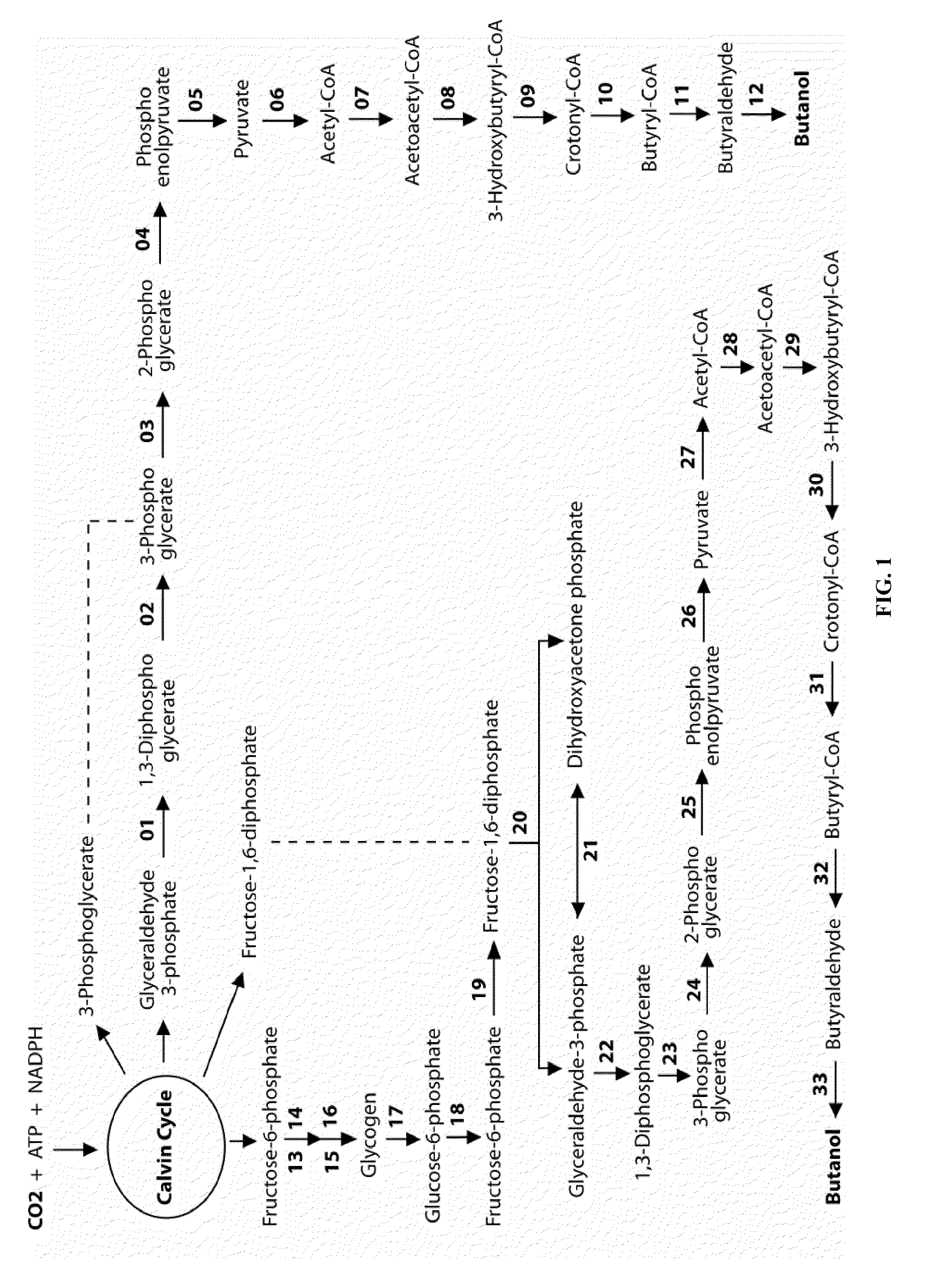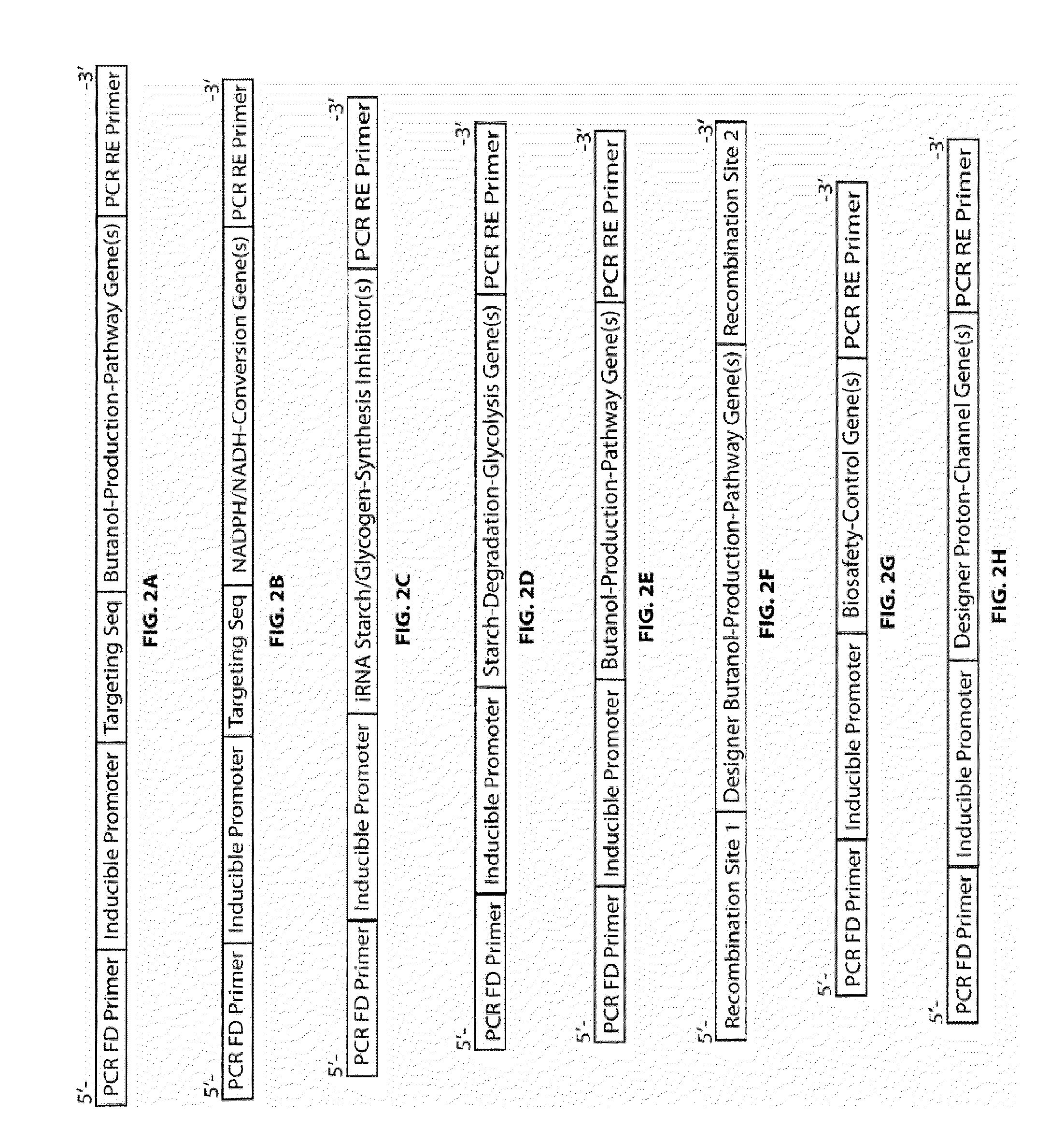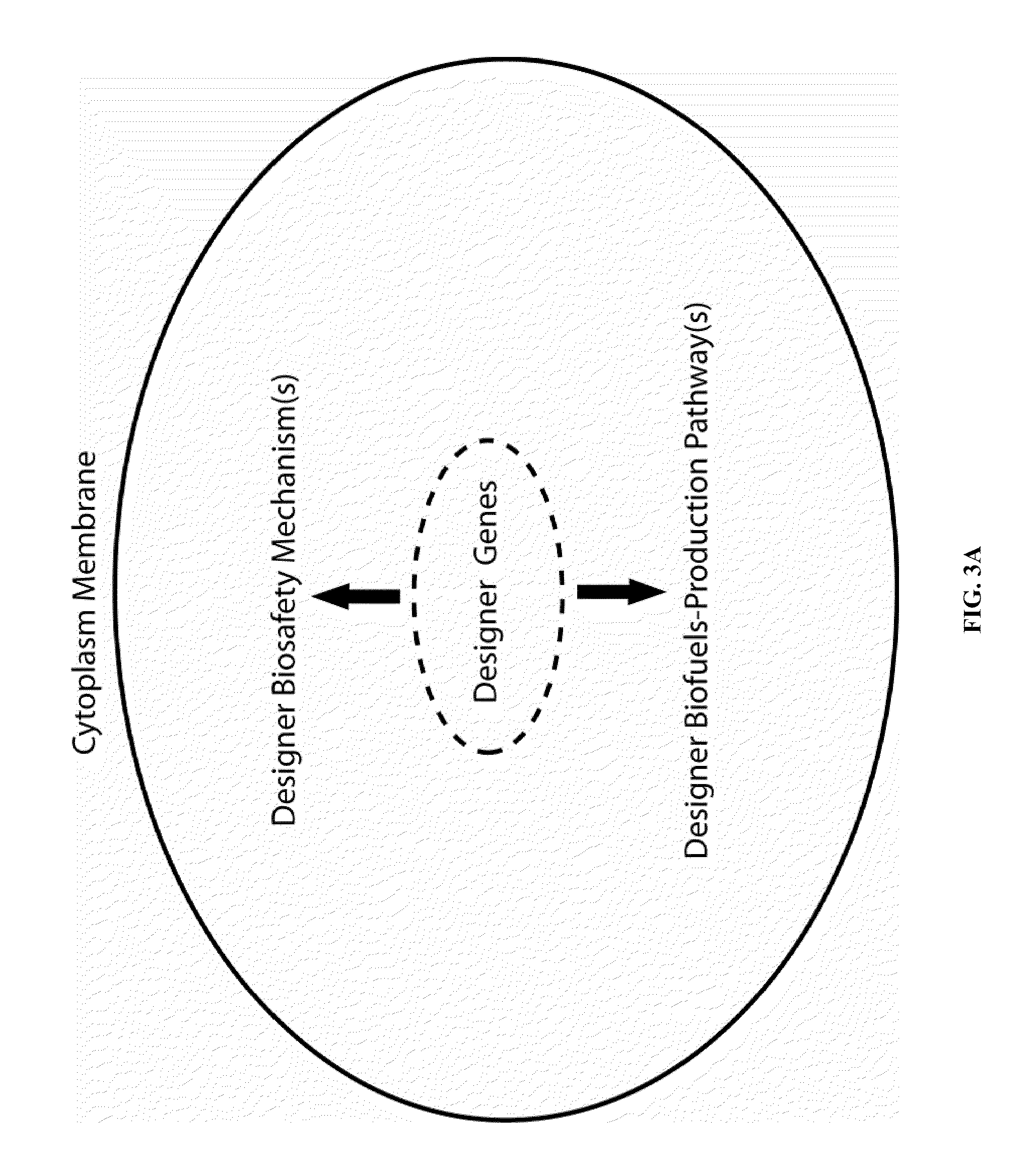Designer calvin-cycle-channeled production of butanol and related higher alcohols
a technology of calvin cycle and butanol, which is applied in the direction of biofuels, enzymology, transferases, etc., can solve the problems of reducing the production of butanol by fermentation, the cost of cornstarch butanol production process could also be nearly as much energy, and the roadblock to the cost-effective conversion of lignocellulosic biomass to fermentable sugars, etc., to achieve the effect of reducing power n
- Summary
- Abstract
- Description
- Claims
- Application Information
AI Technical Summary
Benefits of technology
Problems solved by technology
Method used
Image
Examples
Embodiment Construction
[0038]The present invention is directed to a photobiological butanol and related high alcohols production technology based on designer photosynthetic organisms such as designer transgenic plants (e.g., algae and oxyphotobacteria) or plant cells. In this context throughout this specification, a “higher alcohol” or “related higher alcohol” refers to an alcohol that comprises at least four carbon atoms, which includes both straight and branched alcohols such as 1-butanol and 2-methyl-1-butanol. The Calvin-cycle-channeled and photosynthetic-NADPH-enhanced pathways are constructed with designer enzymes expressed through use of designer genes in host photosynthetic organisms such as algae and oxyphotobacteria (including cyanobacteria and oxychlorobacteria) organisms for photobiological production of butanol and related higher alcohols. The said butanol and related higher alcohols are selected from the group consisting of: 1-butanol, 2-methyl-1-butanol, isobutanol, 3-methyl-1-butanol, 1-he...
PUM
| Property | Measurement | Unit |
|---|---|---|
| size | aaaaa | aaaaa |
| energy contents | aaaaa | aaaaa |
| energy content | aaaaa | aaaaa |
Abstract
Description
Claims
Application Information
 Login to View More
Login to View More - R&D
- Intellectual Property
- Life Sciences
- Materials
- Tech Scout
- Unparalleled Data Quality
- Higher Quality Content
- 60% Fewer Hallucinations
Browse by: Latest US Patents, China's latest patents, Technical Efficacy Thesaurus, Application Domain, Technology Topic, Popular Technical Reports.
© 2025 PatSnap. All rights reserved.Legal|Privacy policy|Modern Slavery Act Transparency Statement|Sitemap|About US| Contact US: help@patsnap.com



